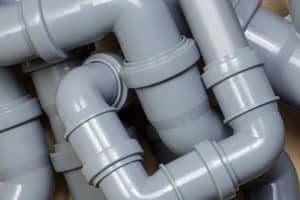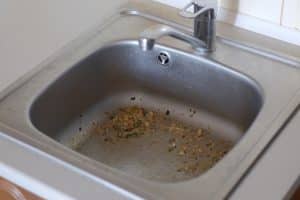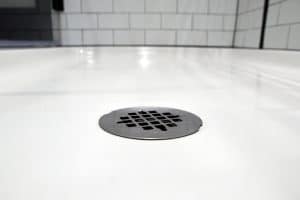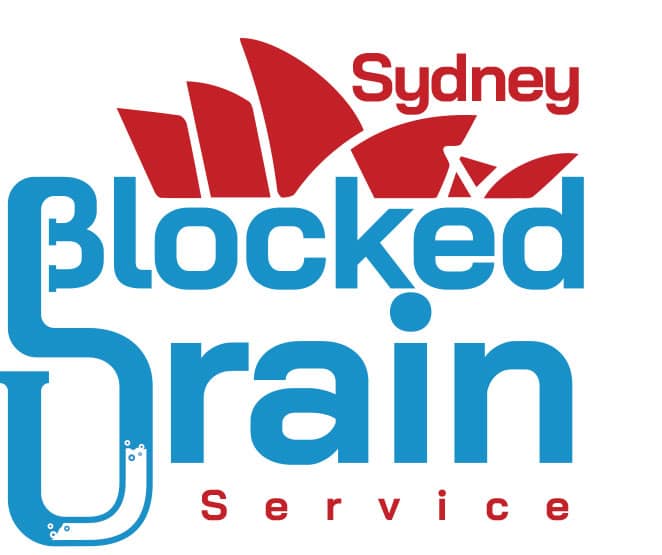How Does Drain Size Affect Clogging Risk?

Drainage systems are the unsung heroes of our homes, quietly working to whisk away waste and water without much thought from us. But when they become clogged, it’s a different story altogether. Understanding how drain size impacts the risk of clogging is crucial for maintaining a smoothly functioning plumbing system. This article will delve into the nuances of drain size and its effects on clogging, exploring various types of drains and practical tips to mitigate the risks.
What types of drains are impacted by their size?
Different drains in homes vary in size and function, and each is affected differently by its dimensions:
- Kitchen sinks: Often the hub of culinary activities, kitchen sinks can easily become clogged due to food scraps and grease buildup. The size of the drain here plays a crucial role in determining how efficiently these substances can pass through.
- Bathroom sinks: From toothpaste globs to hair strands, bathroom sinks encounter a variety of debris that can impede water flow. Drain size influences how effectively these obstructions can be cleared.
- Showers and tubs: Hair, soap scum, and mineral deposits are common culprits for shower and tub drains. The size of these drains affects how swiftly water can drain, thus impacting the risk of clogs.
- Floor drains: Often found in basements, garages, or utility rooms, floor drains are designed to prevent flooding. However, debris and sediment can accumulate over time, and drain size determines how efficiently these obstructions are cleared.
Why does drain size matter for clogging?
It all boils down to a simple principle: diameter vs. debris size. Imagine a narrow alleyway – it only takes a small object to cause a major blockage. Conversely, a wider path allows for easier passage of even moderately sized objects.

This analogy applies perfectly to drains. A wider drain diameter provides more space for debris to flow through without accumulating. For example, a wider kitchen sink drain can handle larger food particles that might get stuck in a narrower pipe.
When does drain size increase clogging risk?
While a wider drain allows for more flow, it doesn’t mean you’re invincible to clogs. Here’s where what you put down the drain becomes crucial:
- The FOG factor: Fats, oils, and grease (FOG) are public enemy number one for all drains, big or small. These nasty substances solidify as they cool, creating sticky traps that catch other debris and cause blockages. Always dispose of FOG in a separate container, never down the drain!

- Mind the grate gap: Drain grates are your first line of defence, catching hair and large debris before they wreak havoc in the pipes. However, using a grate with gaps too big for your specific drain size is like having a wide-open gate. Smaller debris can sneak through, causing clogs deeper in the system. Choose a grate with gaps small enough to block unwanted materials but large enough to allow water to flow freely.
How can you minimise clogging risk regardless of drain size?
The size of your drains plays a role in how easily they clog, but it’s not the only factor. Here’s how you can fight back against blockages, regardless of drain size:
- Regular cleaning: Develop a regular drain cleaning routine. A simple yet powerful solution is a baking soda and vinegar combo. The fizzing action helps break down grease, soap scum, and other buildup that can lead to clogs. Just pour baking soda down the drain, followed by hot vinegar. Let it sit for 15 minutes, then flush with hot water.
- Use drain covers: Install drain guards or strainers that fit your specific drains. These act as a first line of defence, trapping hair, food scraps, and other debris before they venture further down the pipes.

- Avoid pouring grease: Resist the urge to pour cooking grease or oil down the drain. These solidify as they cool, forming nasty clogs. Instead, let grease cool and solidify in a container, then dispose of it in the trash.
- Flush with hot water: Give your drains a periodic hot water flush. This helps melt and loosen any buildup that might be lurking in the pipes, keeping them flowing freely. Just boil a kettle of water and slowly pour it down the drain.
By following these simple tips, you can significantly reduce your risk of clogs and keep your drains happy and healthy!
What if you have a clog already?
If you’re facing a clog despite your best efforts, there are steps you can take to resolve the issue:
- Plunging: A plunger is a simple and effective tool for clearing partially blocked drains. It uses pressure and suction to dislodge the blockage.
- Chemical drain cleaners: Consider using commercial drain cleaners to dissolve the clog, following the manufacturer’s instructions carefully.
- Plumbing snake: A plumbing snake or auger can be used to physically remove obstructions from the drain pipe.
- Professional assistance: If DIY methods fail to clear the clog, it’s best to seek help from licenced plumbers who have the expertise and tools to tackle stubborn blockages safely.
Conclusion
The size of your drain plays a crucial role in determining the risk of clogs in your home. By understanding the factors that contribute to clogging and taking proactive measures to maintain optimal drainage, you can minimise the risk of disruptions and keep your plumbing system running smoothly.
Don’t let clogged drains disrupt your Sydney home
Don’t let clogged drains disrupt the harmony of your Sydney home. Imagine a relaxing bath interrupted by a slow-draining tub, or the frustration of a sink overflowing with dirty dishes. Sydney Blocked Drain Service is here to prevent those plumbing nightmares. Our experienced technicians can diagnose the cause of your clog, whether it’s a build-up of soap scum, stubborn tree roots, or anything in between. We’ll provide a long-lasting solution to keep your drains flowing freely, so you can focus on what truly matters – enjoying your Sydney home. Get in touch with us today and let our experts restore peace of mind with uninterrupted plumbing performance.
